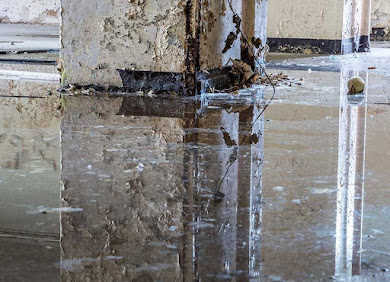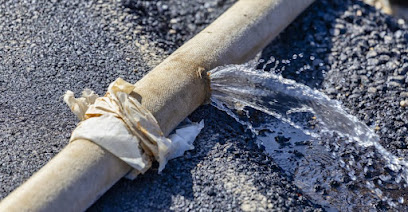How do I detect water damage in my building ?
What is the best way to detect water damage in a building? The answer may be surprising. You can check for leaks by doing a simple inspection of your property, and then going into every room of the house or business while listening for sounds that indicate leaking pipes or plumbing fixtures. If you find any evidence of water damage, it's important to call professionals immediately. It's also vital to keep an eye on things like mold growth and structural stability as well--a thorough examination will help ensure that everything is safe for habitation.
1. Check the ceilings for stains or water-damaged areas
A water damaged ceiling can be the result of water leaking through a roof, water running down walls or ceilings inside your home, water damage from another source (such as flooding), water seeping up through the slab floor due to groundwater issues. Regardless of how it got there, you want to check the ceiling for stains and water-damaged areas that could indicate water damage. If you find water stains, water-damaged areas, or water stains on the ceiling, it's time to call in a water restoration professional.
Why check the ceiling for water damage?
It is important to look for water damaged ceilings because they can be an indication of water damage throughout your home. Water-stained or water-damaged ceilings can also indicate water damage to the ceiling below as well as inside walls. A water damage restoration professional can help identify water damaged areas on your ceiling, whether there's water damaged ceilings beneath the surface level or if the water damage goes beyond just a simple stain.
2. Inspect the walls and floors to see if they are wet, warped, or stained
The water damage process is one of the most common causes of water damage. Water can come from many sources; plumbing leaks, overflowing water containers, burst water pipes, water heaters that are improperly vented to the outside and rotting wood. However there are some other ways in which water damage can occur without realizing it. This article will describe water damage and some of the issues that you might find when inspecting a water damaged home or business space.
Inspect the walls and floor/ceiling, especially any place where there is water damage.
- If water damage on one part of the wall has caused further water damage up on to the ceiling, then this may be the water source.
- If water damage or markers are found on the walls, then it might be water from outside sources such as water coming in from the roof and upper part of the building.
- The frequency and pattern of water damage to the wall can be a strong indicator for water sources within your household.
Inspect the floors and ceiling.
- Water can leak from water heaters, water pipes, overflowing water containers and burst water pipes.
- Wetness from water leakage from water heaters could be concealed by furniture. Inspect behind sofas that have not been moved for a while as well as under beds.
3. Look for signs of mold growth on surfaces that have been exposed to moisture
There are many signs to look for when identifying water damage in your home. One of these can be water damage mold infestation which is dangerous and something you want to avoid. If water has been sitting on any surface or material for about 48 hours it will allow mold spores to start growing. The best way to identify water damage is by looking for the signs of water damage mold.
Water damage mold occurs when water is allowed to sit on a surface for 48 hours or more. This water can be from plumbing issues such as an overflowing toilet, water leaks such as broken water lines, water leaks that come from the exterior of your home such as rain or snow and condensation (when warm moist air comes in contact with a cold surface, water will form).
4. Press your hand against any surface in question - if it leaves an indentation then there is a good chance that there is water damage
There are many kinds of water damage, but the most common include water damage that occurs due to water leaks and water damage that is caused by water spills.
A water leak can happen anywhere, which means that water damage can arise due to water leaks in the kitchen, water leaks in the bathroom, water leaks in property garages, or water leaks in property attics. Water leaking under a property window on the second floor can cause water damage on the first floor.
5. If you find any signs of water damage, contact a professional immediately!
Water damage is one of the most common types of water damage in homes. Water can come from any water source, including rivers, lakes, ponds, streams, waterfalls and even rain water. Over time, water damage has caused many structures to deteriorate severely or to cause them to fall apart completely. If you find any signs of water damage in your home, call a water damage restoration specialist immediately for help!
Conclusion: The water damage service we provide includes the following services, but you should also contact us for more information. We offer 24-hour emergency response and can be reached any time of day or night to answer your questions about how we detect water damage in buildings! Contact us today at EZ Leak Detection.
Author Bio:- Karl Brown
Karl, a marketing manager at EZ Leak Detection, loves to write about plumbing and HVAC services to make the life of the reader easier. Leakages in your property can be dangerous but not all the leaks are easily accessible. He has given extensive information about water leak and slab leak and tips to detect them quickly along with quick solutions to prevent you from inconveniences and health hazards.
Leakage problems and malfunction of appliances demand comprehensive solutions. Also, regular maintenance is not the thing to be missed for leading life with zero hassles. Read our recent post related to leakage detection and repair, alerts for HVAC shutdown and how to repair it, and installation of AC and water heater in San Diego.





Comments
Post a Comment